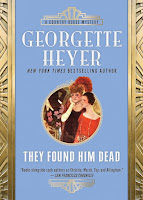 |
| (Amazon UK link) |
I probably shouldn’t have bothered. Or at least, I should have checked the blurb. It’s not biographical or historical although I thought perhaps it might be. And it’s really a children’s book although the first part of the story is about a man - Mr Planemaker - who is only in his forties but has retired from work as he has a heart problem. He keeps having dreams about a mansion being built for him by people with names that are puns.
Then he decides that he wants to build a large model plane, and starts doing a lot of research, noting down lots of details on his son’s computer. But in between there’s a surreal scene involving a computer repair place that insists the computer was custom designed for Mr Planemaker. There’s a lot of discussion about how to get online and to find files and folders on a computer, all of which seems extremely dated now - but even given that it was accurate fifteen years or so ago, it’s far too detailed to be of much interest.
Mr Planemaker is a quirky, quite likeable kind of person. But I could see that something was being obviously foreshadowed - and it happens. It would have devastated a normal family, but that isn't explored at all. There’s no mention of any emotion. And there’s my biggest problem with the book - most of the characters are so flat that I couldn’t bring myself to care in the slightest what happened to any of them. There are hints of some significant themes, and yet no resolution.
The second part of the book is about Mr Planemaker’s children, Dell and Emmilisa, and - to some degree - their cat Cosmos, who appeared in the car when Dell’s computer was fixed. Cosmos apparently has some unusual power over the computer and can cause an ‘assistant’ - who seems to be a real person inside the screen - to appear, and even to take them inside the computer to start following a trail…
I think it could have been quite an interesting story if it had been more coherent and consistent, and if the Planemaker family had been more three-dimensional. I don’t have a problem with surreal fantasy as part of a book, but it is all quite random, and doesn’t seem to have any real purpose. Emmilisa has a problem with bullies at school, but that isn’t resolved at all, other than a vague notion that she’s going to be more confident and self-reliant.
The puns in the names of the odd characters who appear are quite clever, though they’re explained rather too much, and it really wasn’t necessary for the reader to be told three times that however long the children spent inside the computer, it would be no time at all in the real world.
I kept reading, wondering if it would get better, and how it would end. It was light enough that it was easy to read on a flight when I was tired, but it really wasn’t a satisfying story. I wouldn’t recommend it to children; even if the technology were updated, it’s far too long-winded and could have benefited from significant editing.







